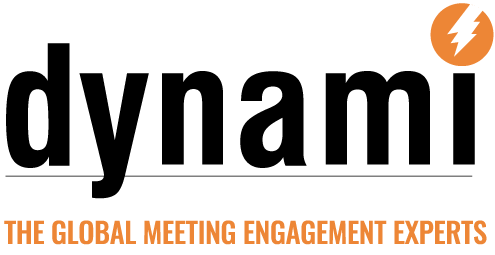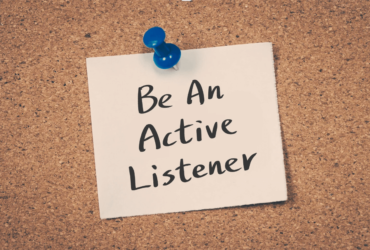Doing the “same old, same old” is a proven recipe for mediocrity and missed opportunities, especially with today’s younger-trending workforce. Corporate meetings and events are no exception. Here are some things to consider when you sit down to design and plan your next meeting or event … but only if you want to connect with your audience …
_____________
We’re all well aware, as Baby Boomers slide into retirement, the current labor force is largely made up of Gen-Xers and Millennials with Gen Z and Alphas to come in the not-too-distant future. This shifting of cultural and societal plate tectonics brings with it lifestyles and learning styles that defy traditional methods of living and learning.
No doubt, you’ve read about how technology of all varieties has shaped Gen-Xers and Millennials. How they crave experiences, adventure and authenticity; how socially and environmentally focused they are; how chasing material things is a turnoff to them; how they’re more concerned with physical and mental health than previous generations … blah, blah, blah.
The key question is: Knowing all this, are you actually designing your program with all this in mind …? Are you? Or are you dusting off last year’s agenda and updating a few sessions and activities here and there and declaring it fresh?
Do NOT Leave Education to Chance
The reality is there are many professionals who are very, very good at identifying and executing the details and logistics of a corporate meeting or event but not that many who also understand the intricacies of learning, comprehension, and inspiration.
Imagine what it would be like to have a Core Planning Team that includes a Subject Matter Expert, Key Opinion Leader, a Learning Expert, and a Meeting Planner. The Subject Matter Expert would own the responsibility for identifying the right information to be communicated and verifying its factual accuracy. The Key Opinion Leader would be an additional person with topic-specific knowledge and a broad understanding of “the big picture” and how everything fits together. The Learning Expert would help design and shape each session [including appropriate media, presentation techniques, and activities]. And the Planner would keep everyone honest in terms of realistic timeframes, room sets and seating configurations, audio-visual, people movement, venue management, transportation-related considerations, food & beverage, entertainment, décor, social activities and events, and the million other logistical things required for a program to flow smoothly and successfully.
Here are six considerations for you to keep in mind …
Be Proactive and Create Session Design Tip Sheets
Nothing overly elaborate, just a simple 1-2 page document that offers advice related to Presentation Skills, Moderating Panels [including what makes a great panelist], Audience Interaction Opportunities, Reflection Intervals to allow for comprehension and/or clarification of info/data just delivered; and Best Practices for Various Media, especially PowerPoint. This gives each presenter a framework and will get them off of Square One if they’re unsure how or what they want their session to look like. It’s a helpful nudge, so to speak.
Schedule Session Planning Meetings or Calls
This is an opportunity for all to gather and bounce thoughts and ideas off their peers. It’s said, “Many hands make light work” and it’s also safe to say, putting heads together in a constructive and helpful way can really catalyze thinking. Just make sure these planning sessions are crisp, respectful of everyone’s busy schedules, and truly beneficial.
Training & Speaker Development
Bring in a Speech Coach or turn to members of your organization who are excellent speakers known for their lively, informative and interactive sessions. Becoming a great presenter does not involve a final destination, it’s an ongoing journey. Even the best of the best are constantly looking for ways to turbo-charge their presentations, keeping in mind shifting social attitudes and priorities, new media, stated goals and objectives, motivational messaging, strengthening audience bonds, etc. Coach ‘em up, as they say, and provide honest, helpful feedback. Presentation training is like weight training and cardio, the more you work at it, the better you become.
Establish a Presenter “Helpline”
Whether it’s a Zoom or Teams Call that can be quickly organized or an email group, provide opportunities for presenters to get a “temperature check” from the group to ensure they’re on the right messaging and session design paths, or to help them get around obstacles they’re encountering. This type of discussion and feedback often surfaces ways to create linkages between sessions and reinforce messaging delivered in others’ sessions. Sessions shouldn’t be designed in a vacuum, this is a team effort.
Double-Down on Outside Speakers, Facilitators, Discussion Moderators, and Panelists
I don’t know exactly what it is but people brought in from outside the organization to present, discuss or facilitate a session always seem to be awarded instant respect and credibility. Leverage this! Find an informed and unbiased industry expert, or someone who can reasonably identify and predict trends yet to come, or someone with a lot of sway and influence in a particular arena. An insightful, knowledgeable “peek under the tent” as to what’s happening or what lies ahead is always exciting for an audience.
Set up a session that mimics a TED Presentation. Or bring in someone who was once in the audience’s shoes and is now wildly successful. Allow them to share how they accelerated their career paths.
Assemble panels in which conversations are authentic and unscripted. And ensure your room set-up enhances a sense of closeness and eliminates any physical or perceived barriers between audience and presenter[s].
Put together a session involving multiple thought-leaders, assigning each a 15-20 timeslot to address a specific topic or issue. This can be a single topic or multiple topics. Challenge them to share something with the audience they’ve never shared before. Build in 5-10-minute discussion periods between speakers during which questions can be asked, points clarified, or suggestions offered.
Be Honest: Ask, “How’d I do?”
After each session or day or even after the program ends, incentivize your attendees and participants to provide honest, candid feedback as to what went well, what needs to be done differently, and what may have done a face-splat never to be incorporated again. Allow them to do this anonymously or openly and provide them something as a gesture of gratitude [i.e., an Amazon gift card, free music downloads, or some cool swag they’d be really proud to have]. Gather and analyze their feedback and draw conclusions that can help you be even better when the time comes to design and execute your next program.
The point is: Shake things up!
Strive to elevate the quality and level of the education and experiences your audience receives at your next meeting or event. Thoughtful and artful up-front decisions made on relevant messaging, session design, media, experiential activities, and outside knowledge will pay dividends long after your program has ended. Finally, remember it is everyone’s responsibility to seek and identify ways to elevate the level and style of conference education – C-Level execs, Marketing, Sales, Operations, the planner, and outside consultants and speakers.
Trust me, if you do this, your audience will love you and work harder to drive the organization forward.
dynami is delighted to offer you a complimentary learning tune-up in preparation for your next great meeting or event.
Cheers,
Kenneth Jones






